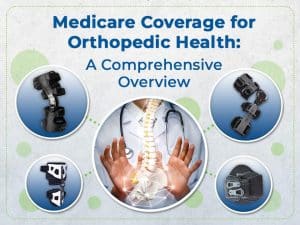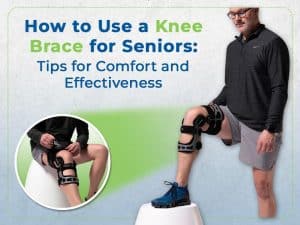In the world of healthcare, understanding how often Medicare will foot the bill for essential medical equipment, like back braces, is of the utmost importance. It is not just about the financial aspect but also about securing a quality life with fewer hindrances. In this discussion, we will delve deep into the nuances of Medicare’s policy on back brace coverage, exploring the frequency with which they might provide coverage for this essential aid.
Understanding Medicare’s Policies
First and foremost, we need to familiarise ourselves with the central policies of Medicare. Medicare Part B generally covers the cost of medically necessary durable medical equipment (DME), which includes back braces. It’s essential to note that these policies can undergo changes, and it’s prudent to always keep abreast of the latest information.
Eligibility Criteria
Medicare does not just cover the costs indiscriminately. There are specific eligibility criteria that one must meet, involving a thorough evaluation of the medical necessity of a back brace in your individual case. Generally, a prescription from a Medicare-enrolled physician attesting to the necessity is required.
The Frequency of Coverage
While the central question revolves around the frequency of Medicare coverage for back braces, the answer isn’t straightforward. Generally speaking, Medicare will cover the cost of a back brace every five years. However, this can change if your doctor can document a significant change in your medical condition, warranting the need for a new brace sooner.
Understanding the Process
Securing Medicare coverage for a back brace involves a systematic process, which includes obtaining a prescription from a registered healthcare provider. This prescription should clearly indicate the medical necessity of the equipment.
Step 1: Consultation
Begin by scheduling a consultation with your healthcare provider to discuss your symptoms and explore the potential benefits of using a back brace.
Step 2: Prescription
If your healthcare provider deems it necessary, they will provide a prescription. This script is a crucial document in the process, outlining the medical necessity for the brace.
Step 3: Medicare Enrollment
Ensure that you are enrolled in Medicare Part B, which covers durable medical equipment.
Step 4: Supplier Selection
Choose a supplier enrolled in Medicare, as not all suppliers accept Medicare.
Step 5: Application
With all the prerequisites met, the final step is to submit your application, complete with all necessary documentation, and await approval.
Tips and Suggestions
Navigating the Medicare landscape can be daunting. Here, we offer some tips to facilitate a smoother process.
- Research: Begin with detailed research into the Medicare policies and stipulations regarding back brace coverage.
- Documentation: Keep all your medical documents meticulously organized.
- Consultation: Seek consultations with healthcare providers to understand the benefits and correct usage of back braces.
- Peer Advice: Connect with people who have traversed the same path. Their advice can sometimes be golden.
- Persistence: Remember that such processes might take time. Be patient and persistent.
The Importance of Back Braces
As we explore the nitty-gritty of Medicare policies, let’s not lose sight of the central element here – the back brace. Back braces play a critical role in alleviating chronic back pain, improving posture, and even aiding in recovery post-surgery. Understanding their importance can sometimes be a motivating factor in navigating the somewhat complex Medicare landscape.
1. Alleviating Chronic Back Pain
A substantial portion of the population suffers from chronic back pain, a debilitating condition that can seriously impede daily activities and decrease the quality of life. Back braces come in as a beacon of hope for many, offering stability and reducing pressure on the spine. By providing necessary support, they can facilitate a reduction in pain, enabling individuals to lead a more comfortable and active life.
2. Support Post-Surgery
Post-operative recovery is a critical phase where back braces come into play significantly. They ensure a stabilized posture, reducing the risk of complications and aiding in a smoother recovery journey. The braces work by limiting harmful movements, providing a safe recovery environment, and facilitating a faster return to normalcy.
3. Improving Posture
In the contemporary era, where many jobs entail long hours in front of computers, poor posture has become somewhat of an epidemic. Back braces aid in correcting posture by encouraging a straighter back and reducing slouching tendencies. The cumulative effect of this can be profoundly beneficial, preventing long-term health issues and encouraging a more confident posture.
4. Accelerating Rehabilitation
Apart from aiding in post-operative recovery, back braces can be a pivotal part of rehabilitation following accidents or injuries. They provide the necessary support that allows individuals to undertake physical therapy and other rehabilitation exercises with a reduced risk of further injury, fostering quicker and safer rehabilitation.
5. Prevention is Better than Cure
Beyond the realms of recovery and rehabilitation, back braces serve a preventative function. For individuals prone to back issues, wearing a back brace can help prevent strains and other injuries, especially during strenuous activities or heavy lifting. The adage “prevention is better than cure” rings especially true here, as wearing a brace can sometimes circumvent the need for more invasive interventions in the future.
6. Psychological Benefits
We must also underline the psychological comfort and the boost in confidence that comes with reduced pain and improved posture. The psychological dimension of wearing a back brace can not be understated, as it brings about an enhanced sense of well-being and fosters a positive outlook towards life, courtesy of improved physical health.
Read More: Alleviate Back Discomfort with Effective Back Braces
FAQs
Before we wrap up, let’s address some of the frequently asked questions concerning Medicare and back brace coverage.
1. What type of back braces does Medicare cover?
Medicare covers medically necessary back braces prescribed by a Medicare-enrolled physician, generally including both rigid and soft braces. The specific kind covered depends on your medical necessity; consult with your doctor to determine the best option for you.
2. Can I choose any supplier for my back brace?
No, the supplier must be enrolled in the Medicare program and accept the assignment. Utilize the Medicare Supplier Directory to find an appropriate supplier and always verify their Medicare enrollment status to steer clear of future complications.
3. What is the average waiting period for approval?
The waiting period is variable, typically ranging from a few weeks to a few months. The timeline can depend on the efficiency of your supplier, Medicare’s processing time, and the completeness of your documentation. Ensure all the details are correctly filled in to avoid delays.
4. Is there a possibility of speeding up the process?
While it’s structured, there are ways to potentially speed up the Medicare approval process. Ensuring your documents are correctly filled, choosing a reputable supplier, and being proactive in responding to Medicare’s queries can sometimes facilitate a quicker process. Your healthcare provider might also expedite the process in urgent cases.
5. How do I appeal if Medicare denies coverage for my back brace?
If Medicare denies your back brace coverage, you have the right to appeal. Start by reviewing the denial letter carefully to understand why it was denied. Next, gather all necessary documents supporting your case, including medical records and bills. You will then need to submit a redetermination request form within 120 days of receiving the denial notice.
Relieve Back Pain: Back Braces Designed by Artik Medical Supply
Let’s get you back on track! Our back braces feature adjustable compression systems and are available for lower and mid-back support. If you’re not sure what product is right for you or if you’re eligible for insurance coverage, Artik Medical Supply will provide the guidance you need. We can even communicate with your doctor to determine the best back brace for you. Contact us today to check for insurance coverage.
In Conclusion
As we come to the conclusion of this extensive exploration into Medicare’s policies on back brace coverage, we hope you find yourself more equipped to navigate this landscape. Remember, while it may seem complex, being meticulous, staying informed, and following the necessary steps with diligence can indeed facilitate a smoother, more successful process. This guide aims to provide a pathway to understanding the frequency of Medicare’s coverage for back braces, giving you the knowledge to embark on the process with confidence and clarity.
Tags/Key Phrases
- Medicare and back braces
- Medicare Part B
- Durable medical equipment (DME)
- Medicare-enrolled suppliers
- Medicare policy changes
- Back brace application process










